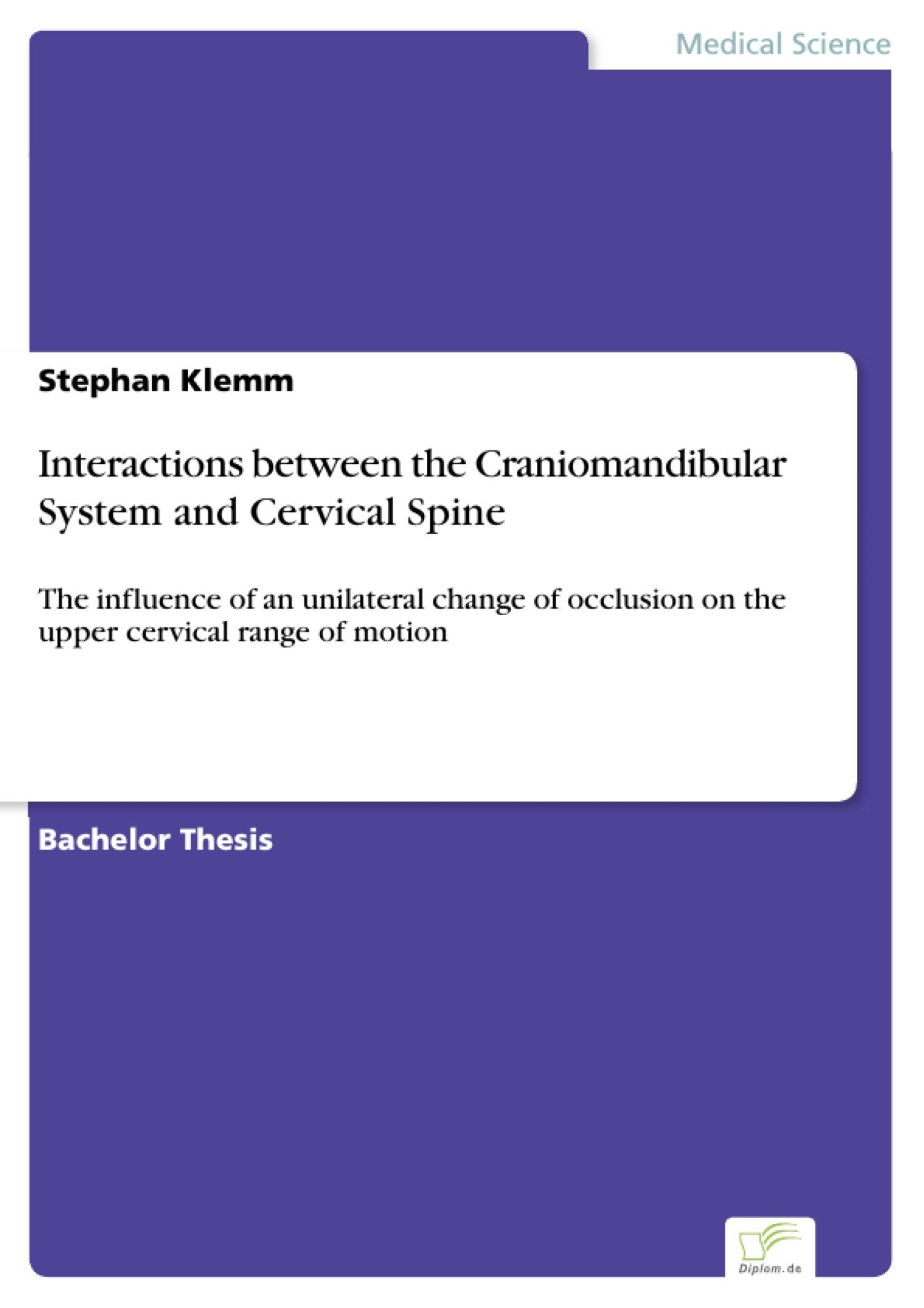Interactions between the Craniomandibular System and Cervical Spine
The influence of an unilateral change of occlusion on the upper cervical range of motion
| Auflage | 1. Auflage, 2008 |
| Verlag | diplom.de |
| ISBN | 9783836610643 |
Sofort zum Download (Download: PDF; Online lesen)
Produktbeschreibung
Inhaltsangabe:Abstract: The connections between the mobility of the jaw region and that of the cervical spine have been the subject of research on many occasions in recent decades. For example, Ridder gives an overview of experiments conducted on animals by Japanese scientists in his monograph „Functional impairments in the jaw and tooth malalignment and their effects on the periphery of the body“. In this monograph, he describes investigations that tested the effects of changes in the dental and jaw regions, and that persisted in the long-term, on the periphery of the body. In the quadrant theory, Guzay outlines that the centre of the movements of the jaw does not lie within the temporomandibular joint itself. He describes how the movements of the jaw occur around a region in the upper cervical spine, namely around the atlanto-axial joint. Based on this proposition, he declares (ibid.) that inadequate dental occlusion can result in spinal malalignment, leading to curvature of the body axis. Maehara tested the propositions put forward in the quadrant theory by shortening the right-hand teeth in rats. He subsequently observed scoliosis of the spine and variation in the size of the right and left eyes. In addition, he shortened the teeth in Beagle dogs. As a result, the dogs exhibited bad posture, changes to their fur, watery eyes and cataracts. Maehara & Hashimoto then also shortened some of the teeth in monkeys. They observed that the monkeys suffered from loss of fur, exhibited abnormal behaviour and that their tongues were bent. Following this, a stencil-like splint was fitted to the shortened teeth to restore the original tooth height. This resulted in growth of the monkeys' fur, normal behaviour and a straightening of the tongues. In a further experiment, Maehara & Azuma shortened the teeth in guinea pigs. The guinea pigs lost weight after two weeks. Weight loss was greater in these animals than in control animals that were starved. After one week, electro-cardiograms of the guinea pigs exhibited a negative T wave, indicating cardiac insufficiency. The researchers then also shortened the teeth in the control group, which resulted in the negative T wave being exhibited by all animals. Based on these results, the question arises as to whether functional connections in the dental and jaw regions also exert effects on the periphery of the body in humans. Several publications indicate that this may be so. For example, Stiesch-Scholz et al. also [...]
Stephan Klemm, Physiotherapeut, Osteopath D.O., BSc.(Hons.) Ost., Osteopathie Studium an der Internationalen Akademie für Osteopathie in Gent, Belgien. Abschluss zum Diplom Osteopathen 2005, Abschluss zum BSc. (Hons.) Ost. 2007 an der University of Westminster, London. Leiter der Abteilung Physiotherapie von 1998-2006 in der Rehberg-Klinik St. Andreasberg, ab 2007 Ltd. PT in der Fachklinik Erbprinzentanne. Dozententätigkeit an der Internationalen Akademie für Osteopathie sowie der Muschinsky Schule für Physiotherapie. Selbständige Tätigkeit in eigener Praxis.
Stephan Klemm, Physiotherapeut, Osteopath D.O., BSc.(Hons.) Ost., Osteopathie Studium an der Internationalen Akademie für Osteopathie in Gent, Belgien. Abschluss zum Diplom Osteopathen 2005, Abschluss zum BSc. (Hons.) Ost. 2007 an der University of Westminster, London. Leiter der Abteilung Physiotherapie von 1998-2006 in der Rehberg-Klinik St. Andreasberg, ab 2007 Ltd. PT in der Fachklinik Erbprinzentanne. Dozententätigkeit an der Internationalen Akademie für Osteopathie sowie der Muschinsky Schule für Physiotherapie. Selbständige Tätigkeit in eigener Praxis.
